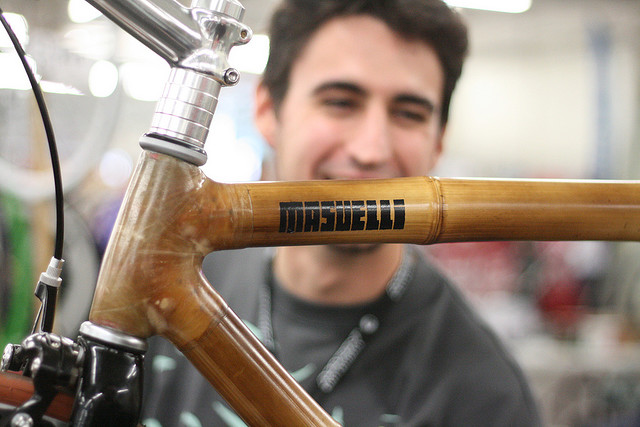For the average skier, cyclist, snowboarder, skateboarder or any outdoor enthusiast, going entirely green in your sport seems like an expensive, inaccessible option. Yet, for many who are still striving to be more environmentally conscious, it’s something important to adopt, largely because of spending so much time outdoors and wanting to protect the world we live in.
Is getting the green goods you need to participate in your sport really that expensive? Spending as much as $100 to $1,000 more for a snowboard or a bike, made of recycled materials, just to say it’s good for the environment seems to be a little too much. The green bike or board don’t necessarily make you better or go any faster, although some feel the winds of good karma might just give you an extra nudge. Others are happy to spend the money on products that help reduce carbon emissions, as increased global warming is apparently bad for the skiing and boarding industry due to snow shortages and tree damage.
Over the past couple years, several companies have embraced bamboo as a viable base material for making outdoor equipment, which seems to be a gradually more affordable option. According to Health News Digest, Bamboo is fast growing and doesn’t require much if any fertilizers or pesticides, so it can be produced sustainably. It is also rigid and hard to break. While most skis and snowboards on the market today still use more traditional hardwoods like beech, birch or aspen in their cores, bamboo is definitely coming on strong. Some of the leading ski makers leading the bamboo charge include K2, Salomon, Kingswood, High Society, Boomtown, Obsidian, Locomotiv, Liberty, and Blue House.
But, is it accessible to the average, everyday consumer? For the actual skis and snowboards themselves, it’s definitely becoming more widely accepted and offered by more recognizable, mainstream companies, as you can see in the list above provided by Health News Digest. However, a lot of the bamboo or green equipment still can’t be found at your local Sports Authority or Sport Chalet. Typically, you’ve got to order it online, and you need to know what you’re looking for ahead of time.
California-based Arbor Collective uses sustainably sourced bamboo, natural wood veneer and poplar, respectively, in its three lines. Protective top layers are made from a 30 percent castor bean-based bioplastic and the edges are made of 60 percent recycled steel. Salomon, one of the industry’s leaders, has pioneered using bamboo in its snowboard cores as part of its Green Initiatives for Tomorrow program. The company’s embrace of bamboo has helped it cut down significantly on toxic fiberglass resins while reducing the plastic content of its boards by some 25 percent.
Aside from the green equipment grab, you won’t find nearly as many green-based outerwear options like coats, gloves, ski pants, ski boots, ski hats, etc. They’re out there, but you’ve got to really search for them. Cariloha is one such brand that’s making strides toward offering more bamboo-based active wear options for outdoor, athletic enthusiasts who not only want to use bamboo goods, but also wear them.
So, what do you need to do to make green work for your sport? Just start looking, asking and trying – one green step at a time. With the use of bamboo and other sustainable materials on the rise, lower prices and easier access to options are following suit. Maybe those green Karma winds really will start blowing your way once you get out and get started.
Additional contacts: Grown Skis, www.grownskis.com; Movement Skis, www.movementskis.com; Lucky Snowboards, www.luckysnowboards.com; Gnu Snowboards, www.gnu.com; Burton Snowboards, www.burton.com; K2 Sports, www.k2.com; Arbor Collective, www.arborcollective.com; Salomon, www.salomon.com.
SOURCE: http://www.healthnewsdigest.com/news/Environment_380/Sustainable_Snow_Sports.shtml


